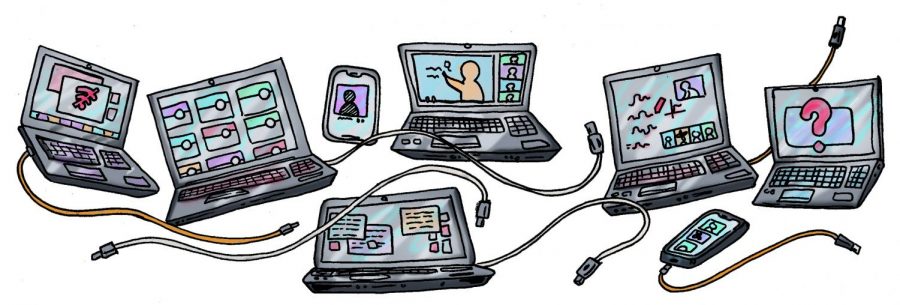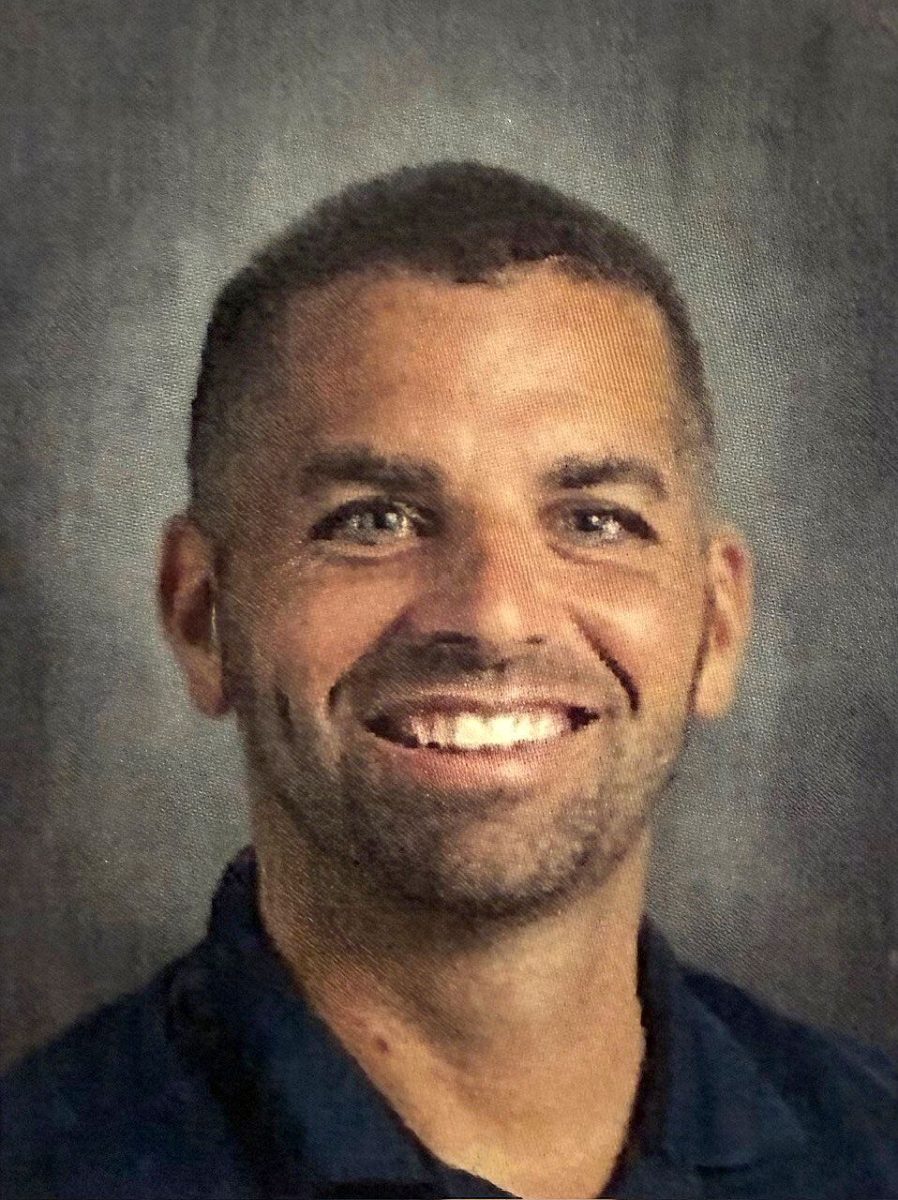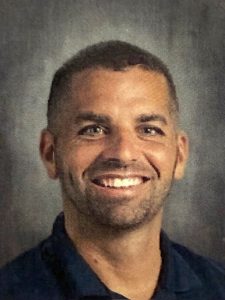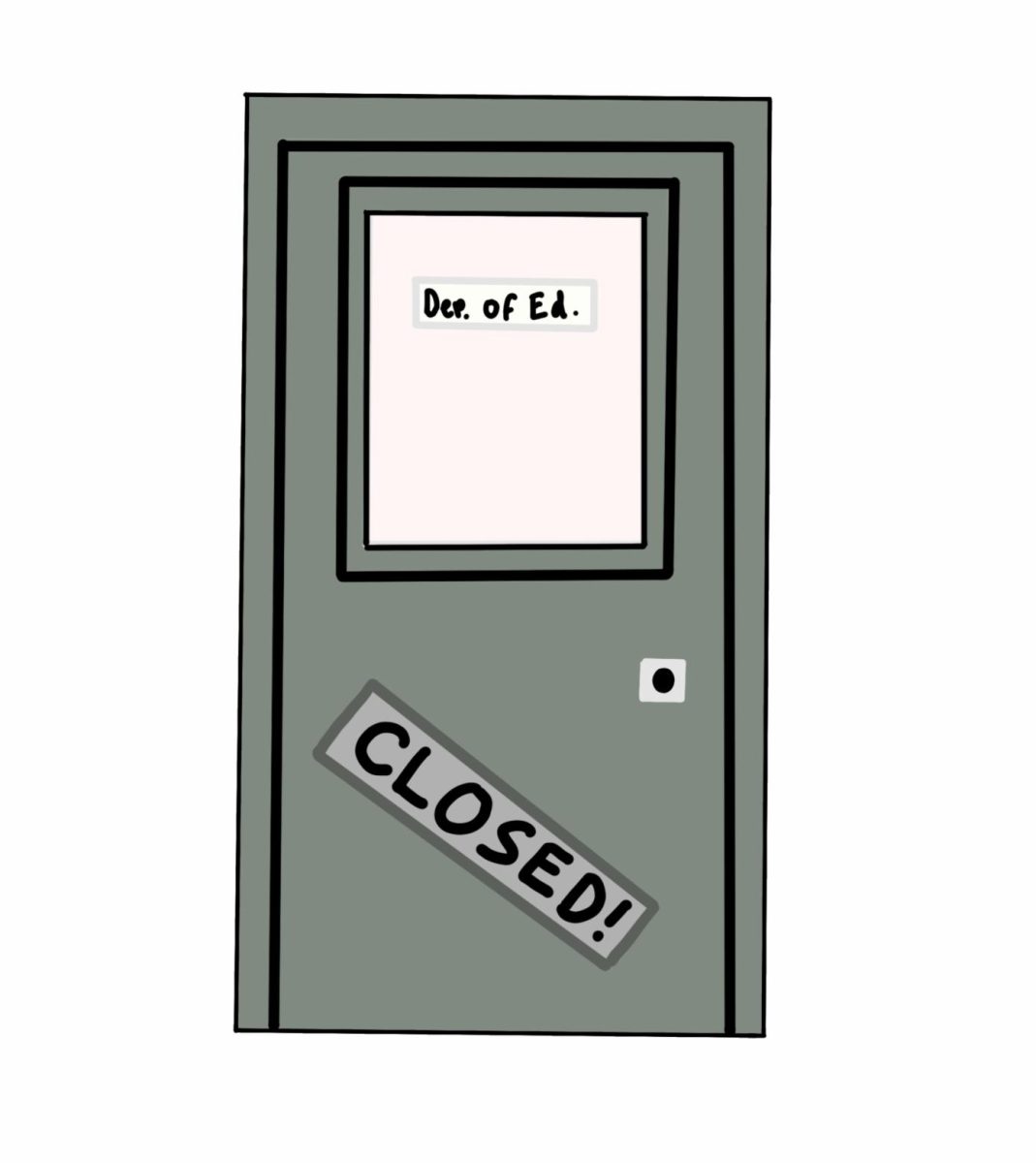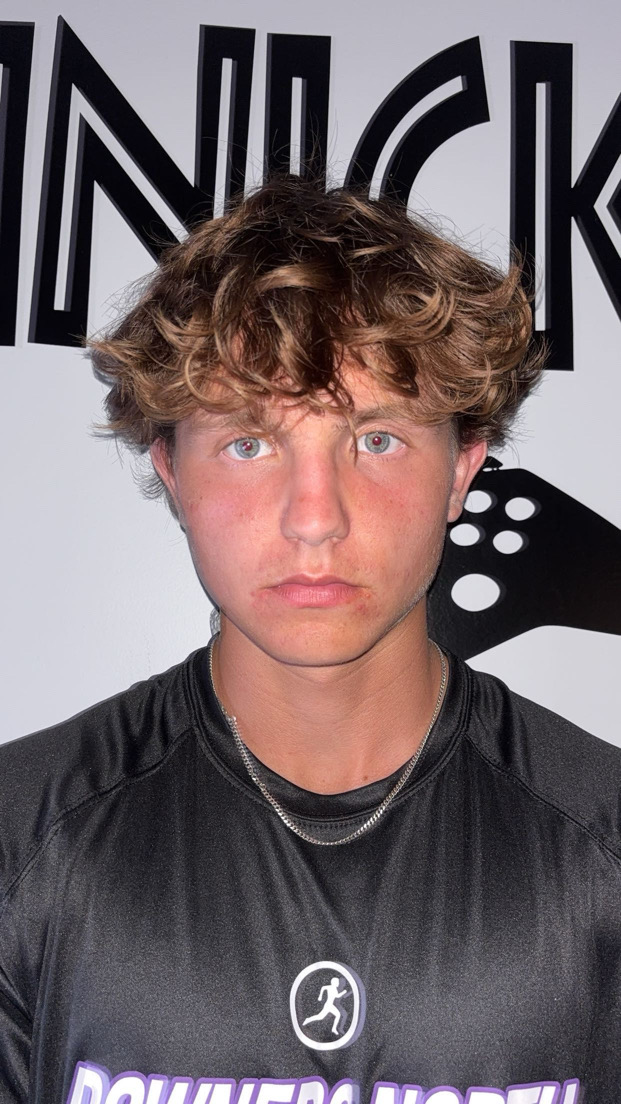Evolution of Remote Learning: Students, staff see general upgrades but still room to improve
EVOLUTION: Remote learning has changed in many ways; including a switch from mainly asynchronous learning in the spring to organized and synchronous in the fall. However, many believe that there are still many improvements to be made for the future of remote learning.
November 24, 2020
“Spring was more about survival, and the fall has been more about adaptations,” Principal Janice Schwarze said in an interview with the Omega. “We’re now in it for the long haul—this is not short-term—so, how do we succeed?”
Such a question has become common for District 99 staff members like Schwarze during the COVID-19 pandemic. The district is actively working to adapt to the circumstances and improve remote learning as much as possible. Overall, in the eyes of students, staff, and administrators, virtual education at DGN has improved since the spring, but there are still some major issues.
THE SPRING SCRAMBLE
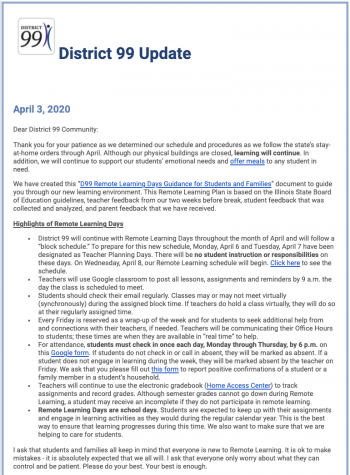
On March 13, Superintendent Hank Thiele sent out a district-wide email outlining the schedule for the following two weeks. Scattered throughout those two weeks were five e-learning days, with the other five being either days off or days for the staff to come into school to plan out an e-learning schedule.
After three weeks of this format, a newer block schedule was introduced to begin on April 13, closely resembling the current remote learning schedule but without the requirement of synchronous Zoom meetings.
“Teachers will use Google Classroom to post all lessons, assignments, and reminders by 9 a.m. the day the class is scheduled to meet. The learning activities or assignments may be independent lessons or longer-term projects, providing flexibility for student completion given the unique nature of this extended period of remote learning,” Thiele’s email read.
In the eyes of senior Justin Berghorst, the lack of cohesive class meetings forced many students’ educational experience, including his, to become individualized and therefore more difficult.
“The major difference between the spring and now is there’s an actual structure now…” Berghorst said. “I think the challenge [in the spring] was that it was a lot more individualized and you had to almost take your own initiative to learn the material.”
PE teacher Lindsey Giannone also explained how, in terms of organization and efficiency, the spring paled in comparison to the fall.
“It was new for all of us as educators on what it could and should look like. I think when our district pushed out the schedule with the Zoom calls and the meetings it enabled us to do more with our classes,” Giannone said. “As opposed to the spring, where I think everyone was sort of scrambling; we didn’t know what it should be or what it should look like…”
FALL UPGRADES
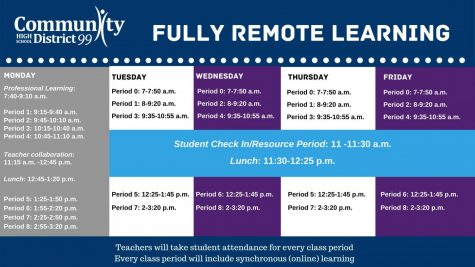
The plan was to return to school in the fall following a hybrid schedule. However, five days before the first day of school, Thiele sent out an email explaining that District 99 would follow a fully remote schedule to begin school. With some exceptions, including the district following two weeks following a modified hybrid schedule (from Oct. 19-30), both schools have largely stayed fully remote throughout this semester.
Schwarze explained how the key change from the spring to the fall was a fundamental switch in district philosophy.
“In the spring, the philosophy was ‘no harm.’ While we wanted to continue to have students learn, we realized that that might not happen,” Schwarze added.
While disappointed with the lack of in-person connection, Giannone explained how, for the circumstances, things are going well this fall with regards to organization and efficiency of teaching.
“Everything from the get-go has been new, has been different… I sit now very comfortable and very confident in what I’m doing… Everything is going really, really well right now to be honest with you,” Giannone said.
For English teacher Britni Mitchell, the biggest improvement from the spring to the fall has been accountability. She elaborated on how attaching a grade to assignments is a motivator both for students and teachers.
“From a student’s perspective, the students enter the year knowing their grades will stick. That’s a motivator even for the least motivated students right now…” Mitchell said. “We’re doing everything we can to try and make sure kids feel like they’re learning, and just being able to attach a grade to it means so much more than ‘okay, I just planned for six hours on a Saturday and now if 30 kids don’t do it it doesn’t matter.’”
Changes have also been made this semester in terms of helping students in need. Starting this fall, the district has given gift cards to families to pay for things like ethernet cables and has also opened up DGN’s doors for in-person learning for “connection students” who had various problems connecting with technology.
Another added element of the fall’s remote learning experience is the time that teachers had to prepare in the summer. Berghorst explains how that time is reflected in teachers’ increased abilities to utilize various online tools.
“Since teachers have had the summer to kind of figure things out… over the summer they had the opportunity to come up with things. So, I know my teachers have been doing Kahoots and PearDecks and a bunch of more fun stuff,” Berghorst said.
In general, Schwarze has been able to notice that a sense of comfortability is now present among teachers and students alike, but the situation is far from ideal.
“I think teachers are feeling comfortable, yet they still don’t like it. It’s a necessary evil is probably how most of them would describe it,” Schwarze said.
“From talking to students it seems like they would much rather be here still. Pretty much what everybody says is: ‘I think teachers are doing what they can and they’re doing a good job, but I miss my friends, I miss the environment, it’s hard to stay focused when you’re in your bedroom or your garage. Trying to focus on learning, like what’s the motivation?’”
ROOM FOR IMPROVEMENT
Administrators, teachers, and students—as well as many parents—all seem to agree that, despite the upgrades made for remote learning in the fall, there is still plenty of room for serious improvement in many areas.
A problem that Mitchell has faced this fall, especially as a single mom, is shifting schedules. While understanding the district’s position, she still feels frustrated with the tentative and ever-changing nature of schedules and how that inconsistency has impacted her personal life.
“Given the nature of the situation, week-to-week we [had] no idea what [is going on] as far as in-person or at-home. Our district is being as transparent as they can be; I mean they’re finding out when we’re finding out, you know?” Mitchell said.
Another issue that persists is student motivation and performance. Schwarze explained how grades are lower among DGN students this year, and that the district must work to seek out the roots of this problem and solve it effectively for the students.
“One thing that we’re spending a lot of time on within our leadership team is for these students who are not succeeding in remote learning: why are they not succeeding?” Schwarze said. “Is it technology, is it home life, is it motivation, is it depression because of everything that’s going on, is it that they don’t understand the material and that they’ve just given up? So, we need to get a handle on that because we have more students earning lower grades than we’ve had in a typical year.”
There have also been several district Board of Education meetings so far this year where parents have voiced concerns over their children’s mental health and motivation.
The Board’s Nov. 16 virtual meeting saw many commenters share their thoughts, with most explaining how their children were losing motivation as well as struggling with mental health, depression, and intense emotions due to remote learning. A common theme was that these parents see the administration as not making students “a priority” during this time.
“I don’t want to hear about space, staff, or any additional justification or excuse for this nightmare you are putting our kids through…” an anonymous commenter stated. “Stop minimizing our students’ health, stop minimizing the damage you are causing by justifying this as an unprecedented time… Start prioritizing people that matter most in the school system—start prioritizing children.”
“We see the same numbers you do, we read the same reports you do, yet somehow you think you know better than us. Our kids want to return to school; please make it happen [as soon as possible],” another added.
STAYING POSITIVE
Giannone stressed that, even though there are still elements of remote learning that are frustrating and damaging for students and teachers, she is thankful for the administration’s efforts in handling the last eight months.
“At that time, we were all confused and we were all scrambling and now, the structure, the time, the effort, the work that [the administration has] put in is amazing. The time, the effort, the love, the compassion has been there 100 percent,” Giannone said.
She also explained the significance of adapting and improvising through adversity in these times, and how she has already seen many signs of that this fall at DGN.
“Students, leaders, everybody, has just done a great job of adapting. It just shows the ability to deal with adversity, so I’m just super proud of our students and our teachers for doing what they’ve done so far,” Giannone said.


